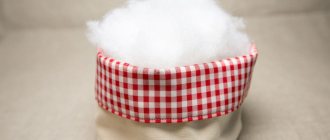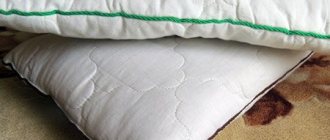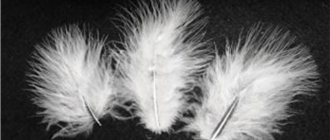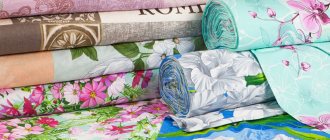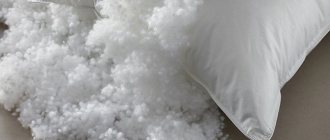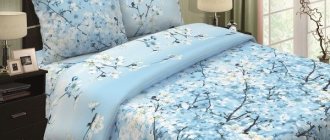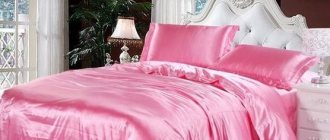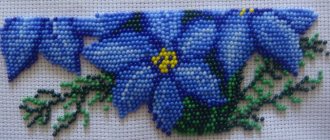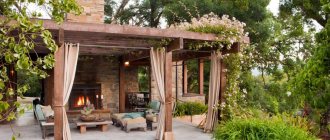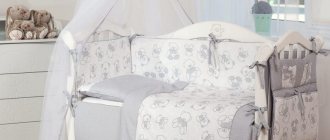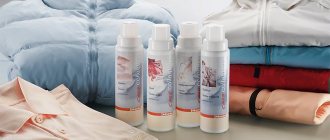Imagine a soft floor covering that can be washed like linoleum or ceramic tile. Do you think the existence of such a gender is unlikely? This means that you still don’t know anything about flocked coating.
Many people confuse this material with carpet or carpet tiles. Indeed, flocked flooring, which has a velor, suede, velvet or similar soft surface, can easily be confused with carpeting. However, they are obtained in completely different ways.
What is flocking
Flocked coating - what is it? If you run your hand over such a surface, you will be surprised how pleasant it is to the touch - reminiscent of velvet. But how to achieve such a result, probably with the help of very complex technology? But no – flocking technology is extremely simple. Its essence is to apply short fibers (flock) to any base coated with glue.
Agree, it sounds so simple, as if flocking can be done at home? That’s right - many modern needlewomen are fluent in this technique and make original things at home, for example, printed T-shirts, postcards and even manicures.
In a factory setting, this technique can be used to produce products with more complex patterns; here fibers of different lengths are used, and the base is applied much more evenly. The process is quite interesting, so, with your permission, we will tell you how velvet spraying (flocking) is done in a little more detail.
You can see in the photo what the product looks like if flocking technology is used for decoration. You can find out what Alcantara leather is in a car in another article.
What is the design and format?
Flotex designs impress with a huge selection of colors, patterns and designs.
Flotex Color
- These are four different abstract designs, each made in more than 30 shades.
Flotex Linear
offers five modern linear designs in a variety of color schemes.
Flotex Vision
– these are designs created using digital printing; you can choose the color and style that suits your interior.
Designer lines
Flotex by Starck
created together with
Philippe Starck
.
Flotex Sottsass
- the result of collaboration with the Italian design studio
Sottsass Associati
.
Flotex Tibor
designed based on the Fotexur collection
by Tibor Reich
.
He was one of the first British textile designers in the post-war era and founded his company Tibor, which is still in operation today.
Look at the design and color options in the catalog on the website, and Forbo Flotex samples can be viewed in our showroom.
Go to the catalog!
Flotex is produced in tile, plank or roll formats. Dimensions:
- bar 100 x 25 cm;
- tiles 50 x 50 cm;
- roll 3000 x 200 cm.
The thickness of the coating in a roll is 4.3 mm, in tile and plank formats – 5 mm.
Production
Flock can be applied to the base mechanically or electrostatically. The first option is cheaper and simpler, but it is also more difficult to achieve a completely smooth (hair to hair) surface. In the second case, we are talking about some costs and this method is more complicated. But the surface turns out perfectly smooth and neat. And now about the nuances of each method:
- Mechanical. Here the flock is placed in a hopper and sifted onto a pre-prepared substrate. The substrate is located on a vibrating base, this helps the fibers distribute more evenly. The fibers stick to the substrate in a random order, unevenly, so the surface cannot be completely flat.
- Electrostatic. First, the flock is subjected to a special chemical treatment so that it can receive an electrical charge, and then, again, it is placed in a bunker. This method does not involve the distribution of fibers using vibration; here the fibers are distributed over the substrate by a grounded electrode plate. As a result, the layer turns out to be absolutely even, all the fibers are vertical.
Additionally, read: Spunbond - what kind of covering material is it for strawberries, which has its own characteristics.
How to lay flocked covering?
Laying floor coverings made using the flocking method is not difficult, be it rolls or tiles. Welding of seams is not required, but the flexible material places high demands on the base. The surface must be dry, clean, monolithic, and perfectly leveled.
Before laying, coated boxes must lie in the room where they will be laid for at least 48 hours to acclimatize. Follow the manufacturer's temperature and humidity requirements and other recommendations.
Have additional questions? Contact ARS Flooring - your reliable guide in the field of finishing materials!
Materials
In principle, you can take any materials for flocking - any textile fiber. However, there are some standards that are used as a basis for mass production.
- Polyester. Most often used. Polyamide fibers are applied to the coating if it is expected that it will be used outdoors - because this material is resistant to rotting, fading and other troubles that may arise as a result of changeable weather conditions.
- Cotton. Soft and natural, but not particularly durable material - it wears out. And, besides, it is not cheap.
- Viscose. Viscose fiber is also of natural origin, but it costs less than cotton. And therefore it is an excellent alternative to the latter.
- Nylon. This material has the highest abrasion resistance
Find out in another article what jute is made from if you don’t already know what kind of material it is.
Properties and benefits of Flotex
- Durable and wear-resistant thanks to its structure. Suitable for high traffic areas. For example, the waiting areas and gates at Lviv International Airport are very busy, so Flotex is installed there.
- Soft and comfortable - provides good sound insulation and shock absorption of 20 dB. Therefore, people in the office or guests in the hotel will not be disturbed by loud noises.
- Safe - has anti-slip properties both dry and wet.
- Flotex traps allergens and dirt while being easy to clean during normal vacuuming. Suitable for allergy sufferers, approved by the British Allergy Association.
- Flotex is treated with an antimicrobial treatment that protects against mold, bacteria and odors.
- After cleaning, Flotex restores its original appearance and retains the color and brightness of the day it was first installed.
- A large selection of designs and colors, as well as a choice of suitable formats.
Flotex is manufactured by Forbo in the UK. This is a premium floor covering that looks beautiful and presentable, lasts a long time and does not require special care.
Fibers
Villi of different thicknesses and lengths can give a very original effect on a product - for example, an intricate ornament.
In non-factory production, a fiber 0.5 mm long (the so-called flock powder) is used as a basis - it flies less apart and lies more evenly on the product.
If the item needs to be more resistant to wear, or, for example, the coating needs to be softer and more pleasant to the touch, a longer pile is taken - 1 mm.
Flock thickness is measured in dtex. Standard - 0.9-2.2 dtex. Thicker fiber - 3.3-6.7 dtex - is used for flocking car interiors. And if you take flock with a thickness of 22 dtex, you can talk about making a carpet.
Varieties of flock chips
If you want to decorate your walls with flock, you must understand that it comes in the form of multi-faceted or rounded flakes. Elements can be colored or made in one tone. They are:
- matte;
- glitter;
- metal;
- fluorescent;
- holographic;
- mother-of-pearl.
The production produces acrylic chips in a wide range, these can be products of different sizes, monochrome combinations and polygons of different shapes, as well as round elements and parts in the form of straws. When choosing a multi-color coating, you will have to mix several shades, where one predominates. Monochrome combinations are a combo of two colors. By choosing products of different sizes, you purchase elements whose dimensions can reach 15 mm.
Care
The most important thing to remember if you are going to clean a flock-coated item is that you should never use cleaning products that contain solvents, gasoline, alcohol or other chemicals that can affect the adhesive base.
It is better to choose a water-based product; it will not damage the surface of the product and will keep the pile intact. It’s better not to wash such things, but you can vacuum them.
If the contamination is not severe, you can get by with a damp cloth; you need to work from the edge to the middle.
If the basis of the spraying is not textile, there is no question of wet cleaning; you can only use dry cleaning.
How is flocked covering made?
Flocking technology involves spraying fibers onto a glue-coated base in an electrostatic field. Electrical contact of the water-dispersion adhesive composition with the ground loop ensures the strongest connection of synthetic or natural pile with the substrate.
Under the influence of electromagnetic forces, the villi acquire a certain direction. After drying, combing and removing loose “fluffs” with a strong stream of cold air, the material can be painted in any color.
It is known that simplified manual flocking technology was used in China 3,000 years ago. The modern method was developed in America in 1926, in Europe it was adopted in the late 40s, and in the USSR flocked materials were known as “electrostatic suede”. Previously used in the textile, footwear, furniture industries and other areas, electrostatic suede was not considered as a floor covering for a long time.
Since various types of surfaces (wood, metal, concrete, stone) can be flocked, today this material is used in the production of wallpaper, original packaging, jewelry and ornaments, toys, etc. They are used to decorate the interiors of cars, yachts, and airplanes.
Flocked flooring in most cases is a three-layer construction: pile, PVC backing and stabilizing fiberglass. On sale you can find both rolled and tile materials.
